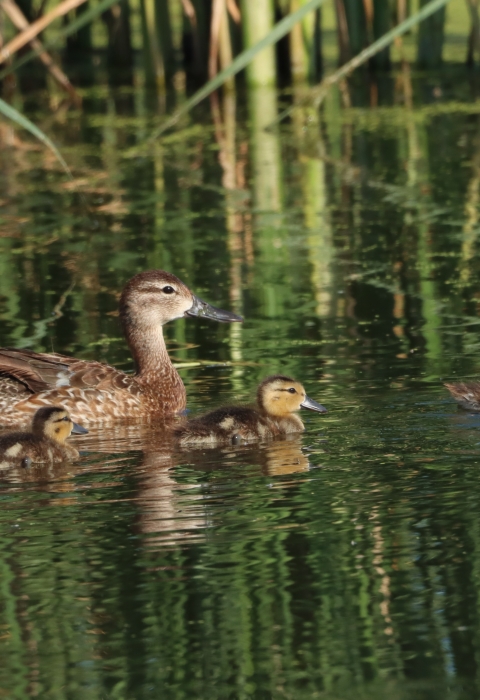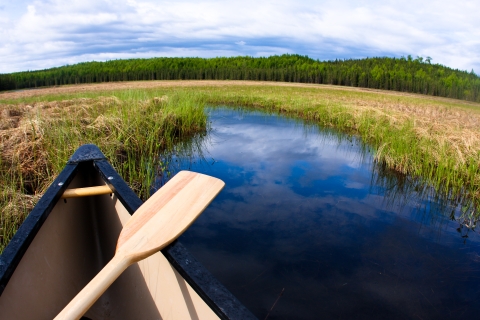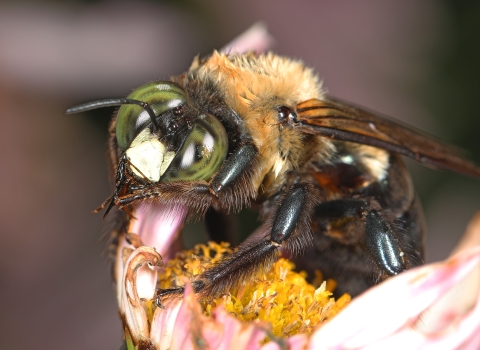10 Ways You Can Help Conserve Wetlands
They can be found in all 50 states and go by many names – wetlands, marshes, bogs, fens, swamps, mangroves, and even mudflats and mires. Regardless of the type, where they are found, or what they are called, healthy wetlands are of vital importance to local communities, individuals, and wildlife.
Learn how you can support conservation of America's wetlands.
- Support wetland restoration and enhancement: Volunteer with local, state, or federal agencies, community groups, and environmental organizations to support their efforts to improve degraded wetlands and create new wetland habitats. Learn about ways to Get Involved with the U.S. Fish and Wildlife Service.
- Guard against wetland loss: Report suspected illegal actions such as unauthorized wetland fill or dredging activities to your state government’s natural resources agency, the U.S. Environmental Protection Agency, or the U.S. Army Corps of Engineers.
- Preserve wetlands for future generations: If you own land with wetland habitat, work with a state or federal government agency or land trust to create a protected reserve, thus ensuring that the land will continue to provide habitat for wildlife and ecosystem services in the future. Farmers can join the USDA Wetlands Reserve Easement program.
- Implement sustainable erosion control practices: Rather than using concrete to hold up the bank of your lakefront or riverside property, install a living shoreline that utilizes plant roots to stabilize the soil and flowers that beautify your view.
- Reduce physical pollution: Pick up litter and dispose of it in appropriate trash containers. Reduce, reuse, and recycle whenever possible to stop waste from ending up in our wetlands and waterways.
- Reduce chemical pollution: Prevent polluted runoff from entering storm drains in your community. Clean up spills of motor oil and other harmful products and limit the use of pesticides and fertilizers. Choose non-toxic household cleaning such as phosphate-free detergents. Phosphates encourage algae growth, which can suffocate aquatic life and can be harmful to humans.
- Plant native: Avoid planting non-native species that can quickly become invasive. Landscaping with native species requires less maintenance and helps to preserve the ecological balance of nearby wetlands. Invasive plants like purple loosestrife and the European common reed outcompete native wetland plants. Many cost-share programs are available; contact your local soil and water conservation district or USDA NRCS office for more information.
- Recreate responsibly: Respectfully enjoy wildlife viewing and other recreational opportunities that wetlands offer by staying on trails and boardwalks and practicing Leave No Trace Principles.
- Act on climate: Wetlands are impacted by changes in temperature and precipitation, and sea level rise and storm surge can lead to wetland loss. Do what you can to reduce your greenhouse gas emissions and encourage others to implement large scale solutions. Learn more about the Service’s climate change climate change
Climate change includes both global warming driven by human-induced emissions of greenhouse gases and the resulting large-scale shifts in weather patterns. Though there have been previous periods of climatic change, since the mid-20th century humans have had an unprecedented impact on Earth's climate system and caused change on a global scale.
Learn more about climate change initiatives.
Help others learn about wetlands: Spread the word about the importance of wetlands, the threats they face, and what people can do to help conserve these important habitats! Learn more about wetlands near you by visiting the National Wetlands Inventory Program’s Wetlands Mapper. Get kids involved with our Wetlands Coloring Book!




